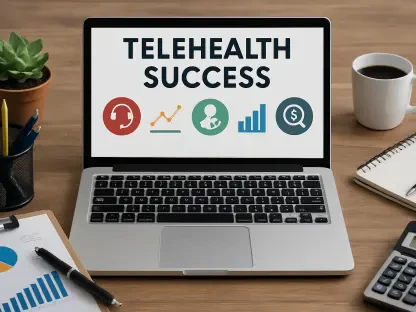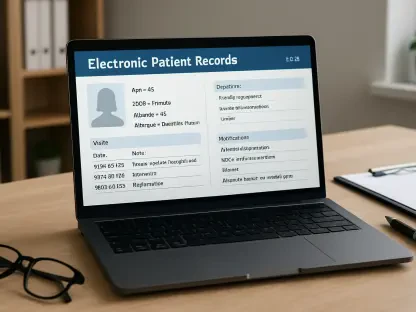James Maitland, a renowned authority on robotics and Internet of Things applications in medicine, brings a wealth of knowledge to the conversation on leveraging technology in healthcare. With a keen insight into current trends, Maitland offers a unique perspective on the intricacies of deploying electronic health records (EHRs) across the Department of Veterans Affairs (VA). In this enlightening discussion, we tackle the critical aspects of accelerating the Oracle EHR rollout and the challenges and expectations surrounding it.
What are the primary goals for the VA with the accelerated Oracle EHR rollout?
The primary goal is to modernize our healthcare infrastructure, providing veterans with a more cohesive and efficient experience. By streamlining processes through the Oracle EHR, we aim to improve data accessibility and interoperability across facilities, ultimately enhancing patient care and outcomes.
Could you share the reasons behind the decision to increase the pace of Oracle EHR deployments?
The decision stems from recognizing the need for momentum. We’ve seen that prolonged rollout timelines can stagnate progress, so accelerating the deployment helps maintain focus, motivate teams, and address the pressing need for updated systems to serve veterans better.
How many VA facilities are scheduled to receive the Oracle EHR next year, and how were they chosen?
Thirteen VA facilities have been scheduled for the next phase of deployments. These sites were selected based on readiness assessments, technical feasibility, and strategic importance to ensure successful implementation and learnings that can be applied to future sites.
What specific challenges have been encountered in deploying the Oracle EHR in the past?
Significant challenges include technical issues like integration errors and data migration complexities. These have sometimes led to disruptions in service and patient care, prompting a reevaluation of our deployment strategies to avoid compromising safety and efficiency.
How does the VA plan to address the technical issues and errors that have affected past deployments?
We’re investing in thorough testing and validation phases before go-live dates, enhancing training for users, and ensuring robust support systems are in place. This proactive approach is designed to mitigate issues and provide immediate solutions should they arise during implementation.
What are some key lessons learned from previous implementation attempts?
One major lesson is the importance of extensive communication and training. Engaging stakeholders early and often ensures everyone is aligned and prepared. Additionally, simplifying system customization goes a long way in reducing deployment time and errors.
Can you provide more details on the $3.5 billion budget request for the Electronic Health Record Modernization program?
The budget allocation is critical for comprehensive management of deployments, system upgrades, support infrastructure, and training programs. It ensures we have the necessary resources to move forward at pace while addressing previous pitfalls and ensuring smoother transitions.
In what ways will this budget be utilized to ensure effective Oracle EHR implementations?
Funds will be directed towards enhancing network capabilities, security measures, staff training, and on-site support, alongside investing in technology updates. This comprehensive deployment support ensures that all facilities can successfully adopt and utilize the new system.
How does the VA plan to coordinate deployments in fiscal year 2027 across 20 to 25 sites?
Coordination involves strategic planning, starting with robust project management frameworks to streamline processes. By fostering collaboration between sites, best practices can be shared, and potential issues can be addressed preemptively, ensuring a synchronized rollout.
How has the acquisition of Cerner by Oracle impacted the EHR rollout process?
The acquisition brought new resources and expertise, enabling us to address technical challenges more effectively. Oracle’s involvement has offered opportunities for innovation, collaboration, and improved system functionality, which are crucial for our rollout success.
What measures are being taken to ensure that patient safety is not compromised during these deployments?
Patient safety is our utmost priority. We are implementing rigorous testing protocols and safety audits before each go-live. Additionally, having dedicated support teams on standby during transitions ensures any potential issues can be handled immediately to protect patients.
How has the VA standardized the EHR to align with practices in other hospitals worldwide?
By aligning with international standards, we’ve adopted a more universal platform while customizing around 10% specifically for VA’s unique needs. This balance has allowed for streamlined operations and easier integration with external systems where necessary.
Could you elaborate on the unique requirements that make up 10% of the VA’s EHR system?
This 10% covers veteran-specific functionalities and workflows that aren’t applicable in general healthcare settings. It includes military history tracking and specific protocols for veteran health issues, ensuring the system meets the distinct needs of our patient base.
With the planned workforce reduction, what steps are being taken to ensure the downsizing does not negatively impact the rollout?
We’ve prioritized maintaining critical IT and support roles vital to the EHR rollout. Upskilling existing staff and leveraging technology to enhance productivity are key strategies to compensate for workforce changes without affecting the quality and pace of deployments.
How is the Office of Information and Technology being affected by the federal government downsizing initiative?
The downsizing requires us to strategically retain and deploy resources where they have the most significant impact. We are turning challenges into opportunities by adopting more agile practices and focusing on priority projects that support our modernization goals.
Do you foresee any potential risks associated with deploying Oracle EHR to a total of 170 medical centers?
Risks are inherent with any large-scale deployment, particularly related to integration and scalability. However, by learning from past experiences, applying rigorous planning, and maintaining flexibility, we are committed to mitigating those risks effectively.
How are you addressing concerns regarding the potential underfunding of the IT budget amidst workforce reductions?
We are advocating for necessary funding by demonstrating the critical nature of this project and its long-term benefits. Optimizing existing resources and ensuring cost-effectiveness in every step are vital strategies to stretch our budget without compromising results.
What are the expected benefits of the Oracle EHR system for veterans once fully implemented?
The benefits are comprehensive, from improved care coordination and faster access to medical records to enhanced patient-provider communication. This modern system will hopefully lead to better health outcomes and overall enriched healthcare experiences for veterans.
How will the VA measure the success of the Oracle EHR deployment program moving forward?
Success will be evaluated through key performance indicators such as system uptime, user satisfaction, and positive health outcomes. Continuous feedback from staff and patients will guide ongoing improvements and adjustments to maximize effectiveness.
Do you have any advice for our readers?
Embrace technology as an enabler, not a disruptor. When implementing new systems, stay focused on the bigger picture—patient care. Listening to feedback and being willing to adapt will ensure that your efforts ultimately lead to superior healthcare outcomes.









